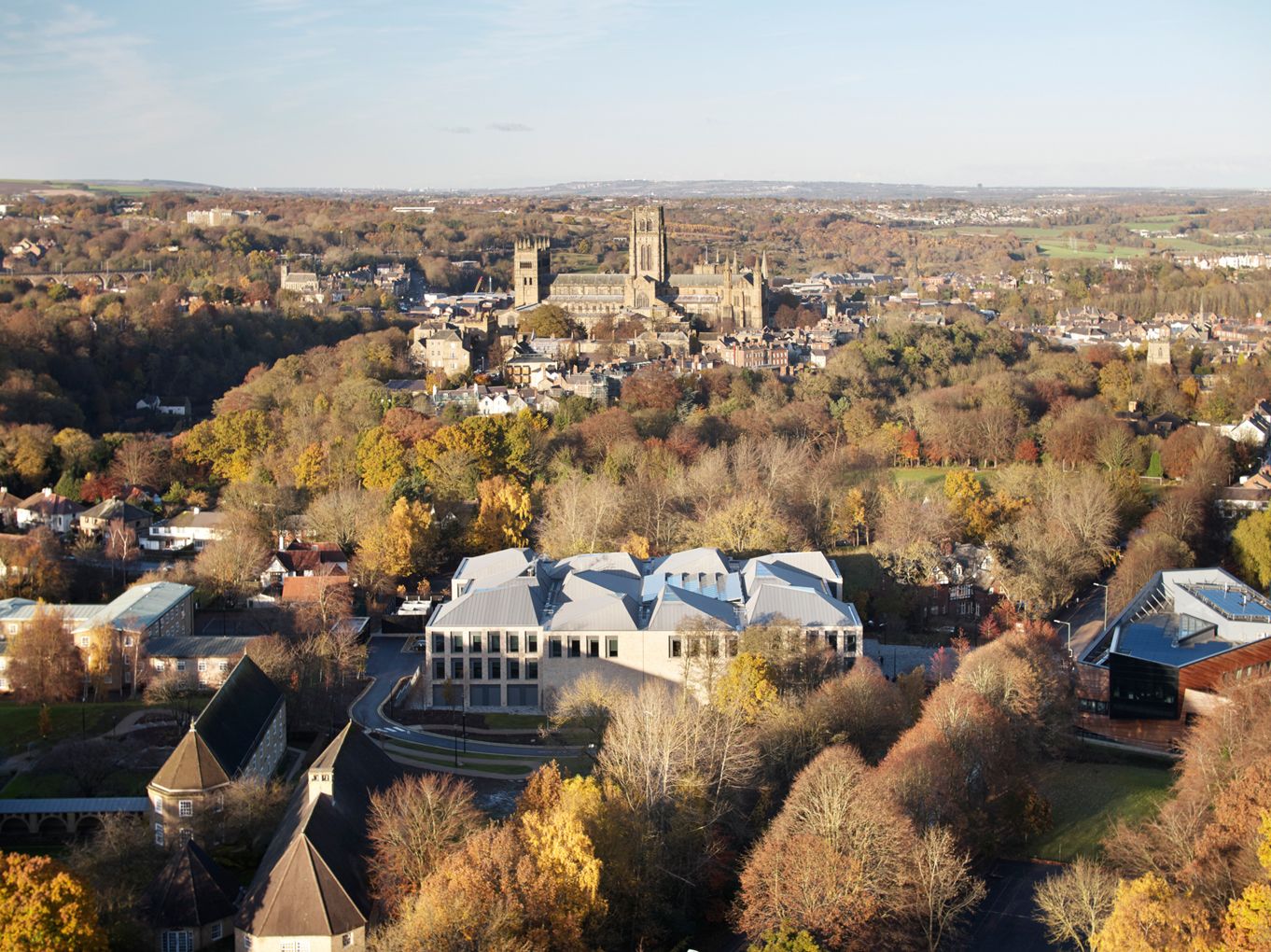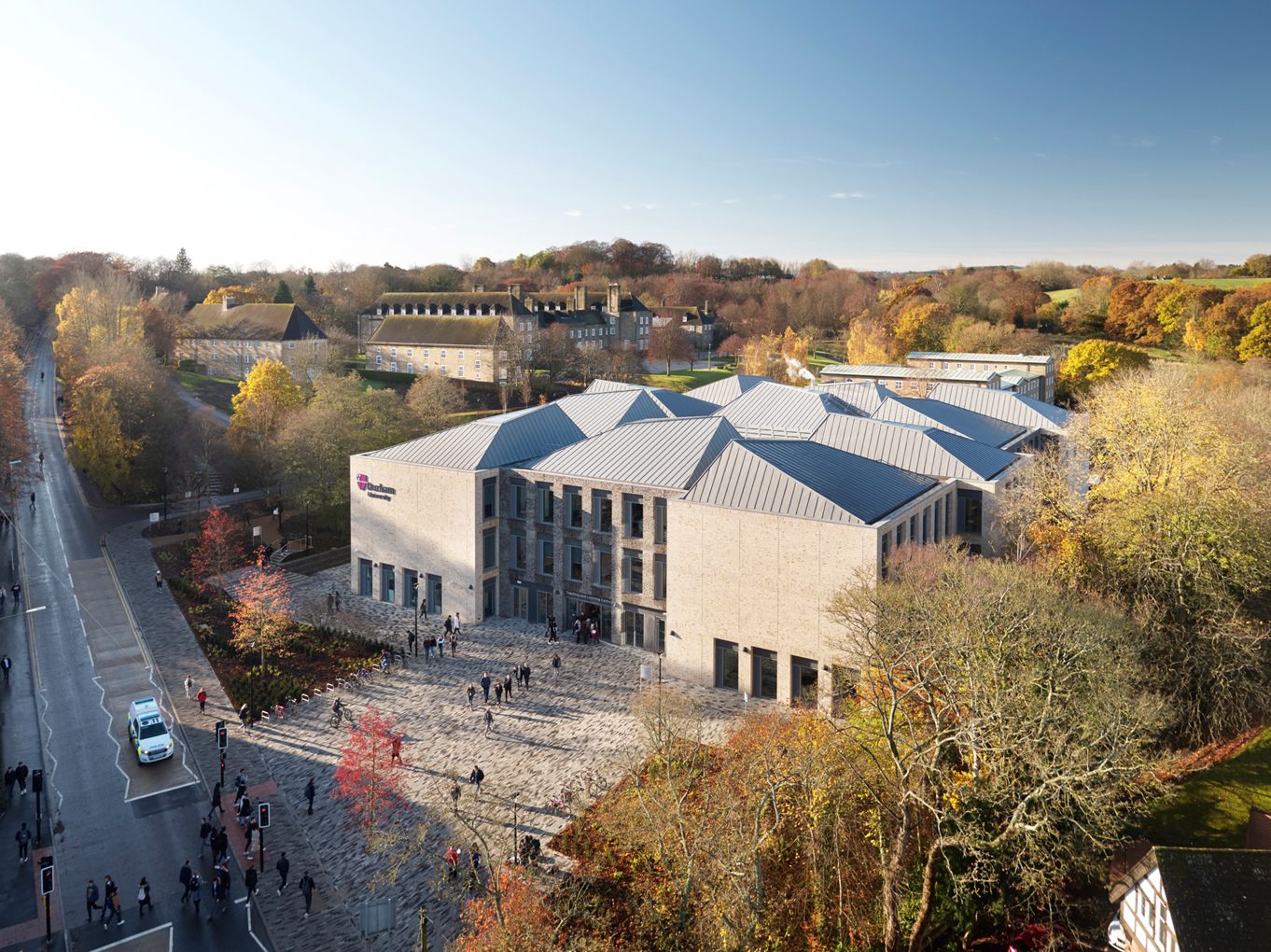
Lower Mountjoy Teaching and Learning Centre wins award
Lower Mountjoy Teaching and Learning Centre has been announced as a Highly Commended Winner in the 2021 Civic Trust Awards.
Located at the heart of the university, this important new facility represents a significant improvement in the quality of learning space at Durham University and is already becoming a crucible for learning and academic endeavour.
Designed by FaulknerBrowns Architects and delivered by SPACE Architects and contractor Galliford Try, the building demonstrates the benefits of a collaborative approach to design and construction.
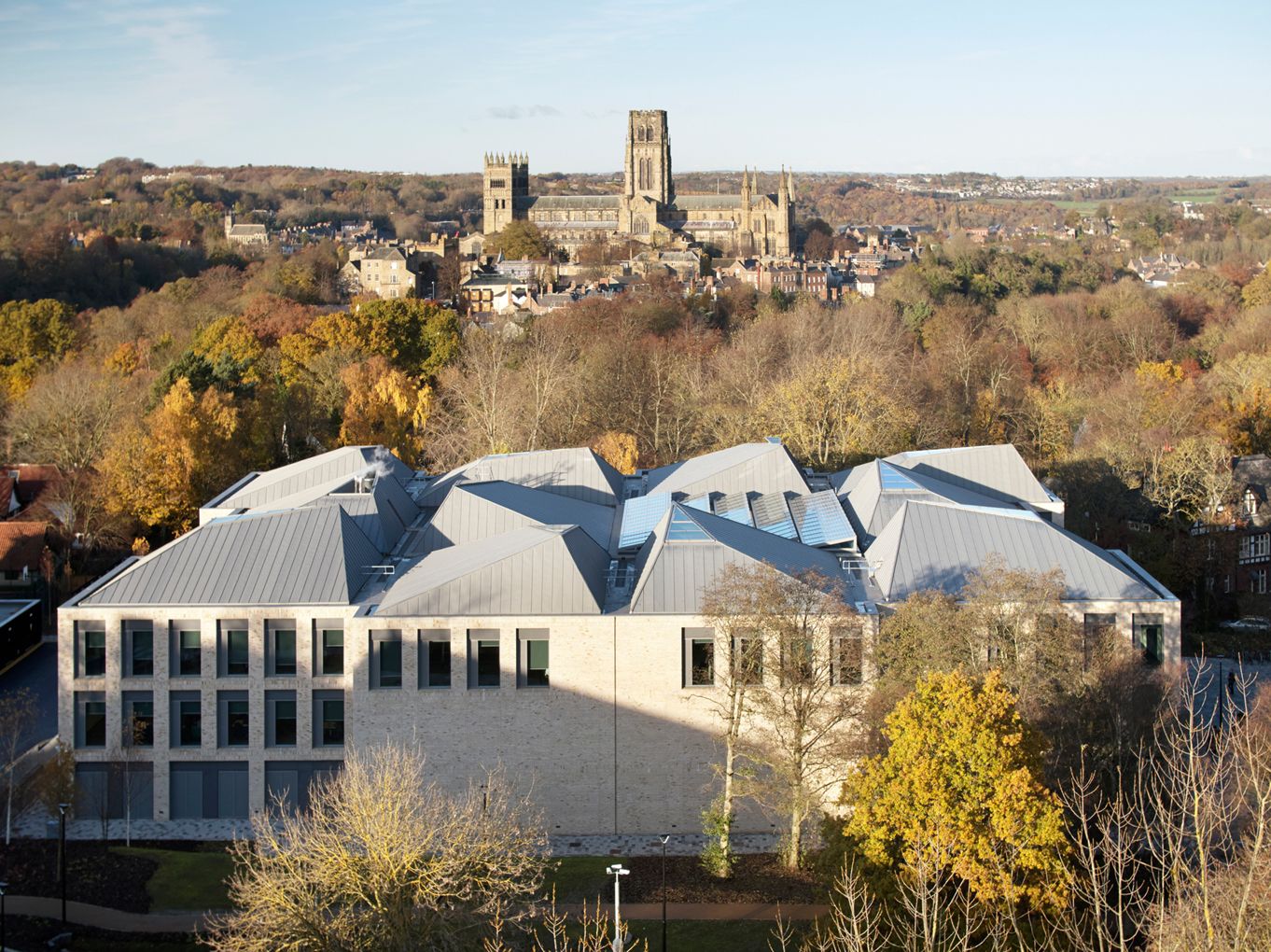
Design strategy
In the Lower Mountjoy Teaching and Learning Centre, a top-lit central courtyard forms the social and circulation hub of the building giving access to the café, 250 and 500 seat lecture theatres, seminar spaces and project rooms. A diverse mix of teaching spaces surrounds the lecture theatres, supporting traditional seminars as well as macro-collaboration and micro-collaboration pedagogies. Cellular project rooms provide an extremely valuable ‘workplace like’ environment for self-guided group work and support innovative pedagogies such as flipped learning.
The vaulted top floor of the centre provides an extensive ‘learning commons’ with a broad range of settings for focussed, contemplative, active and collaborative learning. Full height windows provide views to the surrounding mature landscape and glimpses of the iconic cathedral.
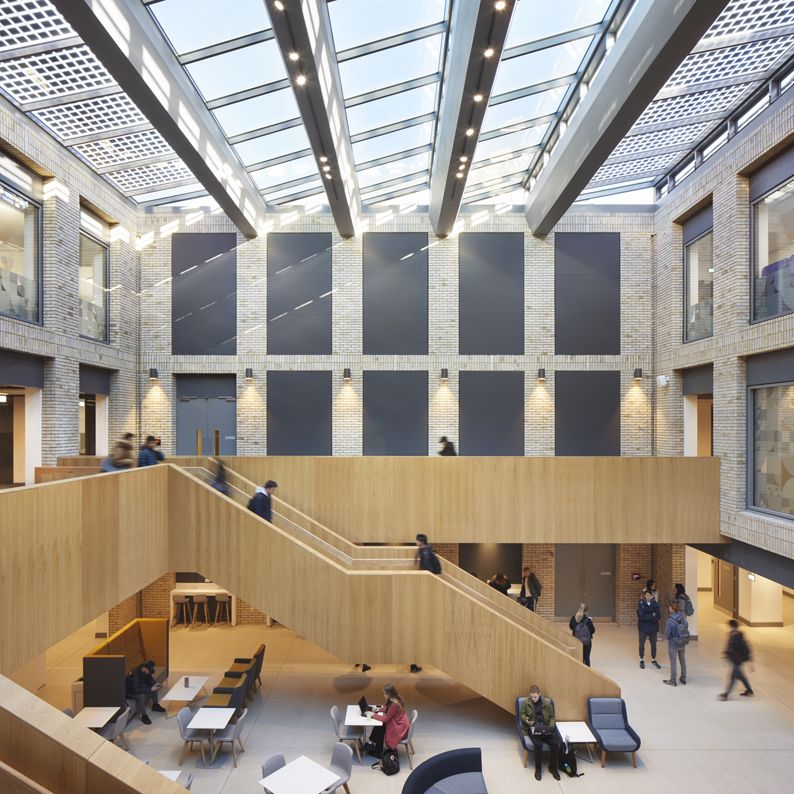
Responding to a World Heritage Site
Durham is a historic city and its UNESCO World Heritage Site, containing the cathedral and castle, exerts a strong influence over the character of the university estate. The site chosen for the teaching and learning centre is situated on the edge of the city centre, adjacent to a conservation area and within view of the World Heritage Site.
In this highly sensitive location, the incorporation of an 8,000m2, three-storey building presented a challenge. To ensure the new centre integrated sensitively with the urban fabric, the overall building volume was broken down into an assemblage of smaller repeated elements to relate more closely to the prevailing grain of the city.
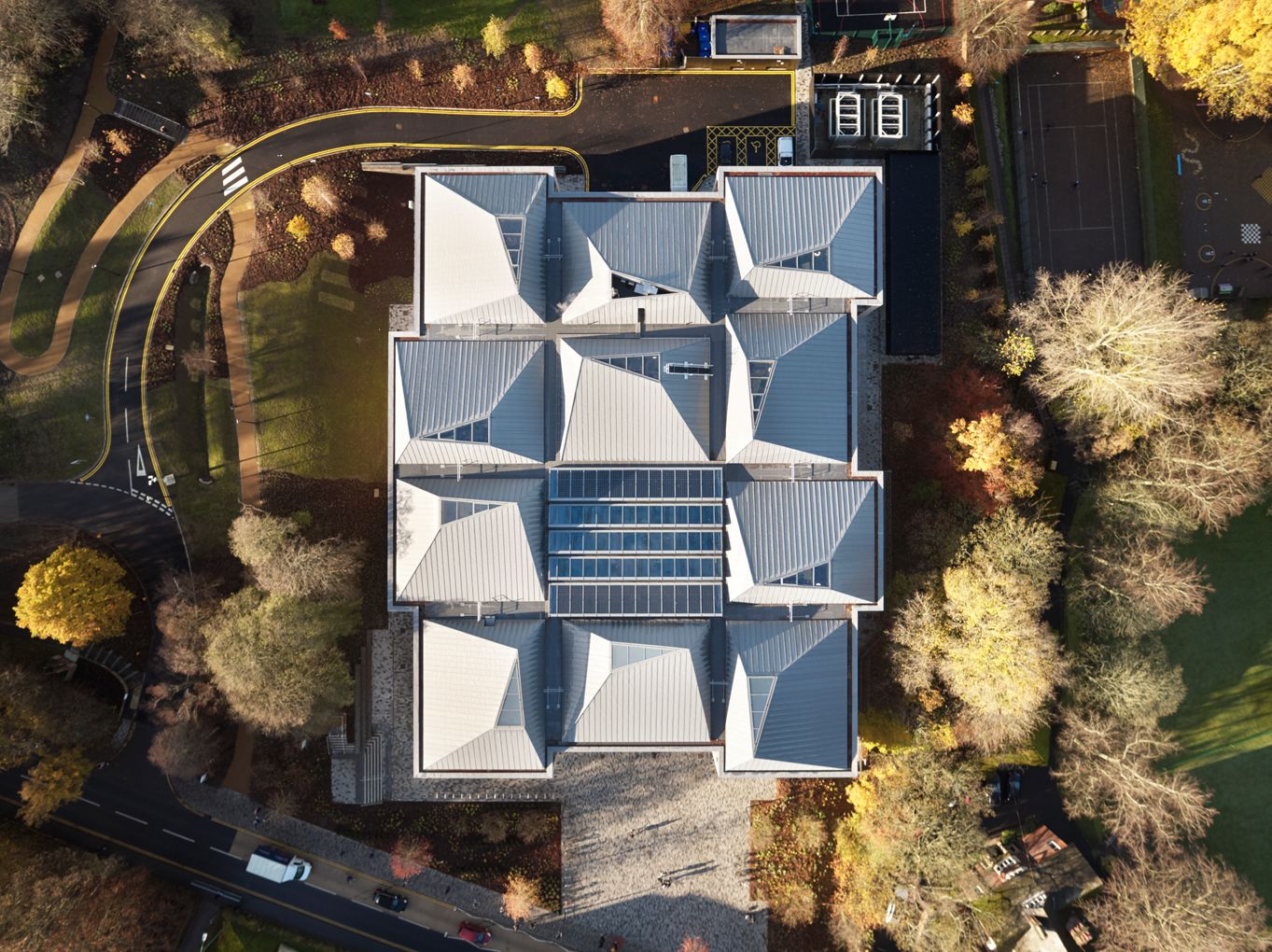
An integrated solution
An integrated technology and sustainability strategy was central to the university’s vision for the teaching and learning centre. The centre has therefore been designed to BREEAM ‘Excellent’ standard and to deliver EPC ‘A’ rated energy performance.
Thin-film photovoltaics embedded within the courtyard roof glazing, together with a combined heat and power unit, make a significant contribution to onsite renewable energy generation. A mixed-mode ventilation strategy is also employed. Natural ventilation is provided from the louvre panels next to the windows, controlled by the Building Management System. Transfer grilles in the rear of the teaching spaces exhaust warm air to the atrium where it is discharged through the roof lights via natural stack effect.
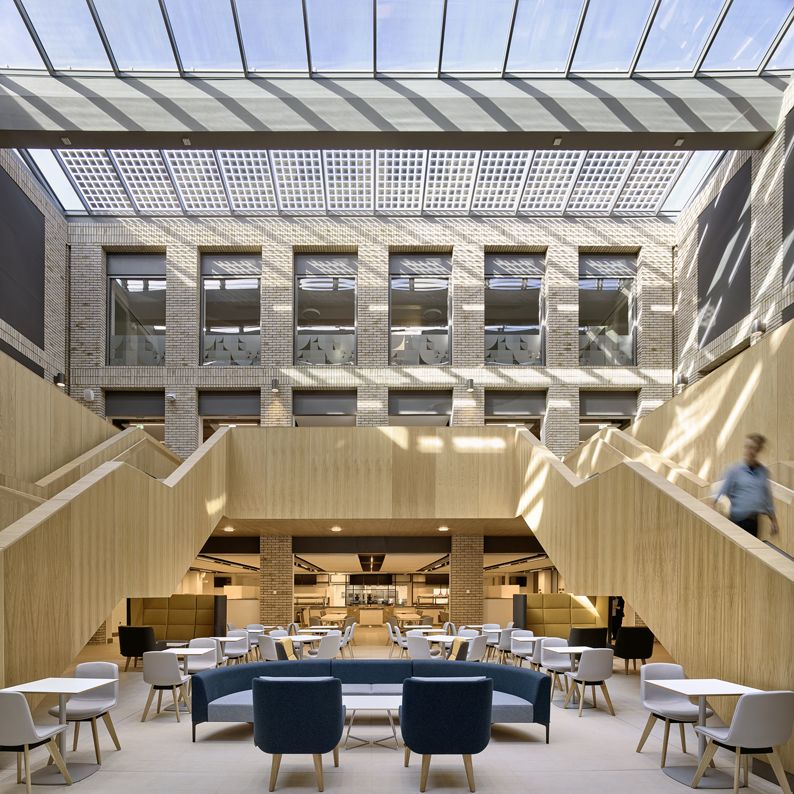
Developing the design
FaulknerBrowns Architects and the Design Stage consultants were appointed to develop the concept to the end of Stage 3 only (although they did have a Technical Advisor role beyond this point) so SPACE Architects, the other Delivery Stage consultants and the Galliford Try team had to carefully develop and refine the design not only in order fulfil the functional and aspirational objectives of the concept design but also to ensure the technical parameters and sustainability objectives were achieved. SPACE Architects were also appointed to fully develop the interior design strategy and to both create and prudently select furniture, fixtures and fittings and this was an essential part of delivering the pedagogical objectives of the scheme.
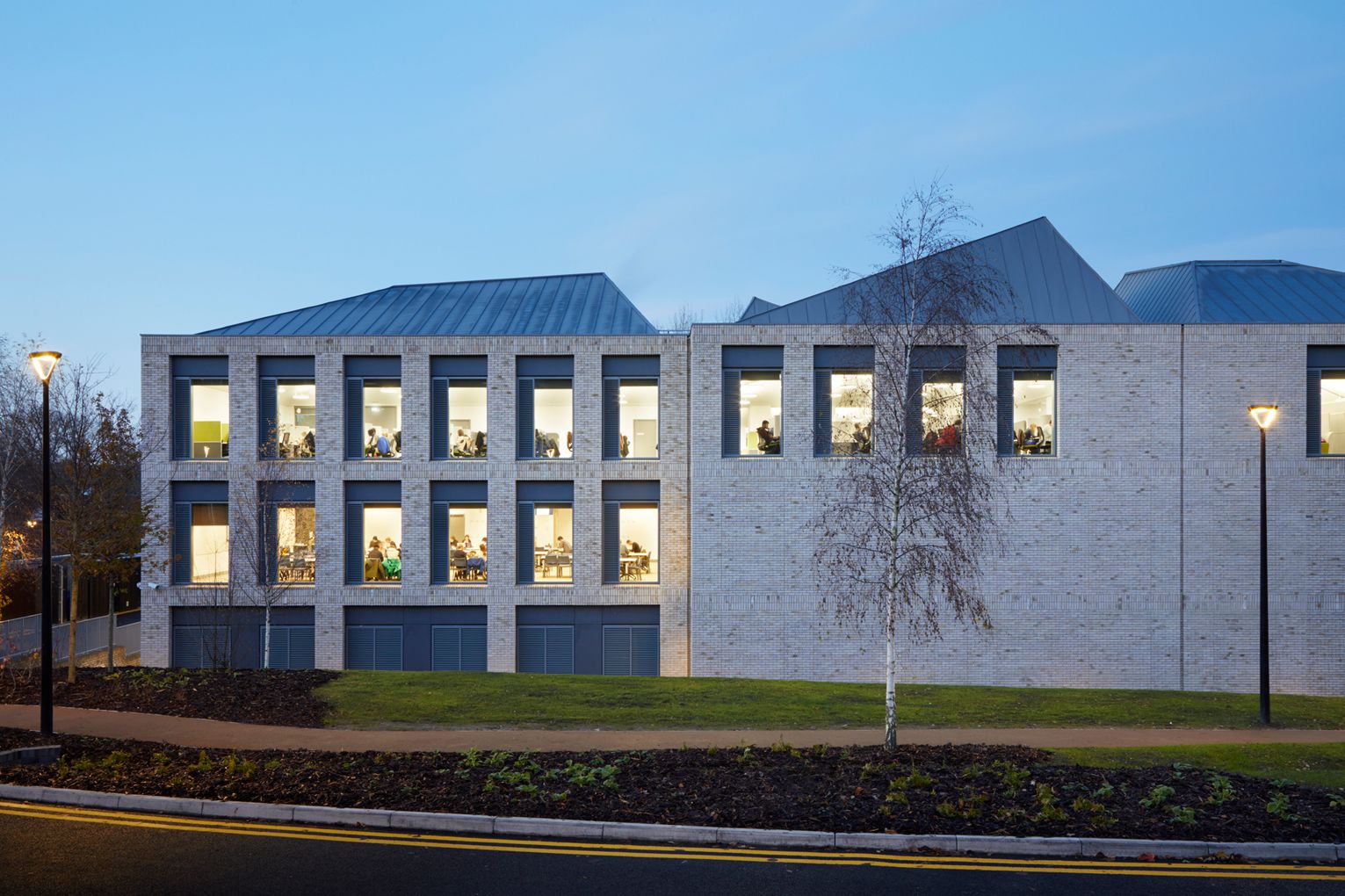
Inspirational learning spaces
Since opening for the start of the 2019-20 academic year, the building has established itself as a hugely popular facility for teaching and learning, which has been embraced by students and academics alike. In delivering the university’s vision, it has realised a step-change in the quality of the teaching and learning experience, enabled the adoption of new and innovative pedagogies and has become a focal venue for academic life.
Click here to read more.
Click here to download a PDF version of the 2021's Winner's Brochure.
